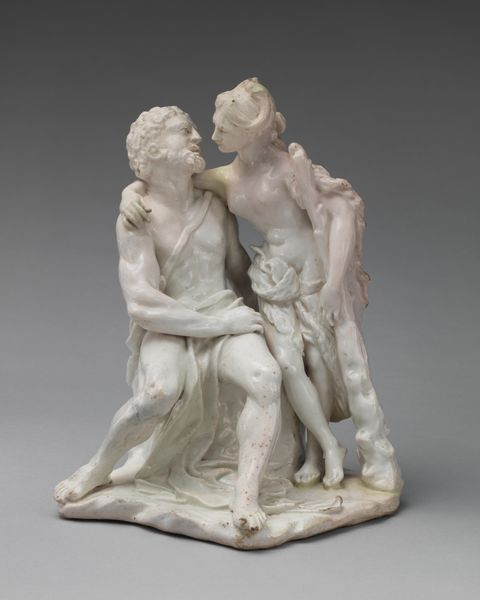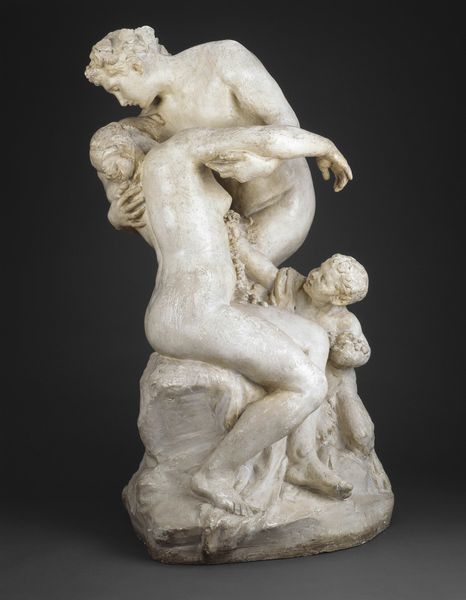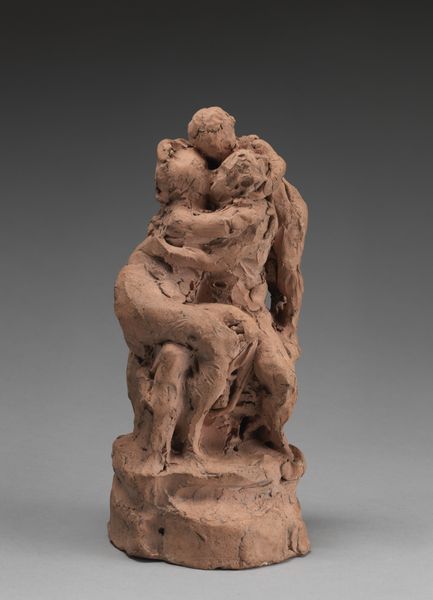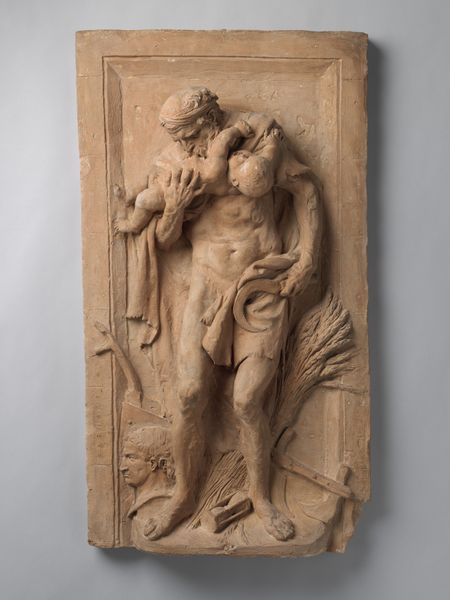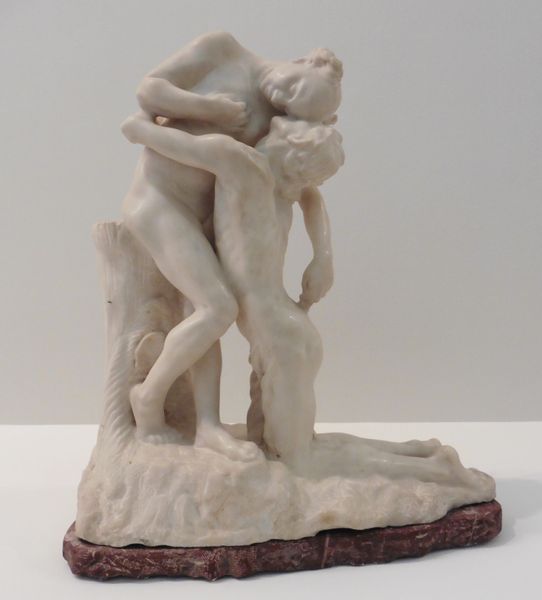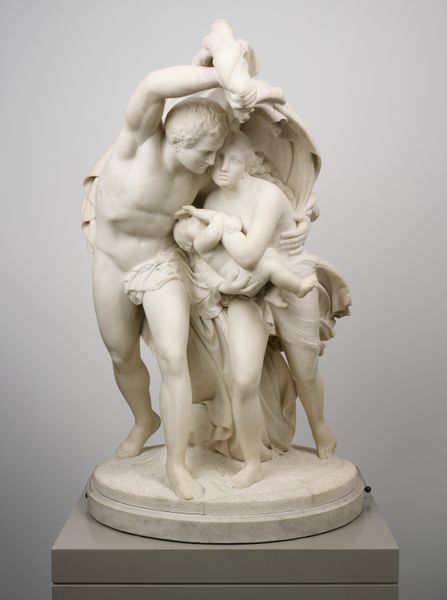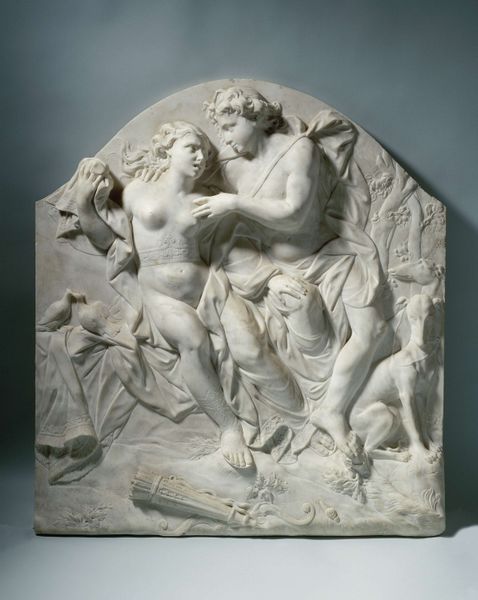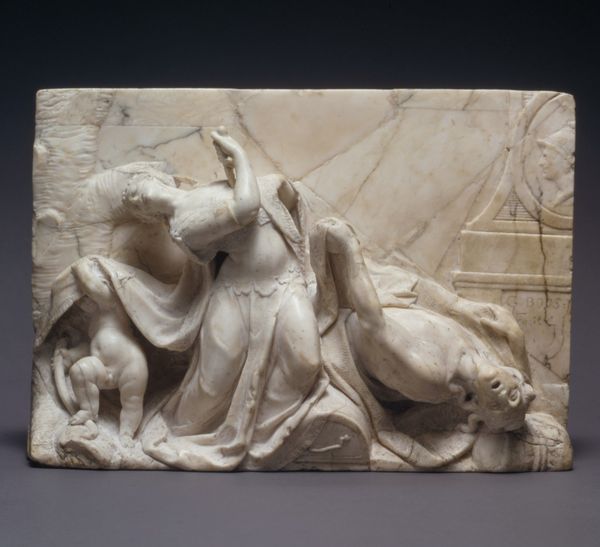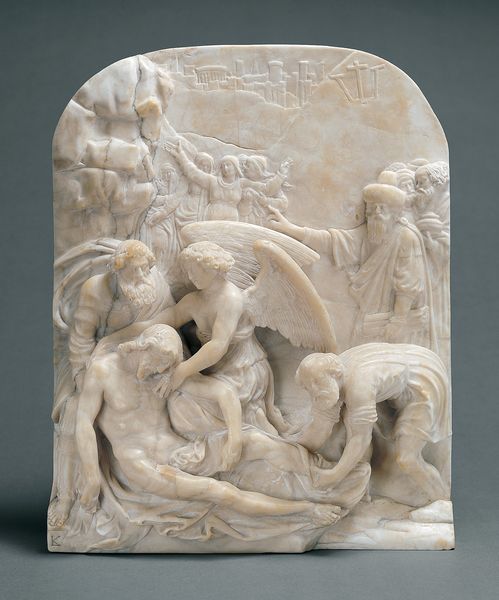
Dimensions: overall: 11.1 x 7.5 cm (4 3/8 x 2 15/16 in.)
Copyright: National Gallery of Art: CC0 1.0
Curator: Let's explore Auguste Rodin's marble relief, "The Lovers," crafted after 1880. The stark white against the textured background makes me think immediately of neoclassical ideals despite Rodin's signature dynamism. Editor: The swirling composition definitely fights against that classical serenity. I find it claustrophobic. The way their forms are pressed together and compressed by the relief... it speaks to passion as something potentially overwhelming, maybe even destructive. Curator: It’s interesting you use the word 'destructive'—that’s quite powerful given that marble, while seemingly permanent, is of course a material worked and shaped through human intervention. The tools used, the degree of finish left... these are active choices on Rodin's part that contribute to the finished artwork, challenging that classical polish. This almost unfinished quality invites us to consider the labor and materiality behind the final form. Editor: Precisely. The incomplete aspect emphasizes a specific cultural memory—that of fragmented Greek sculptures that fascinated 19th-century audiences. The embrace feels classical, but it also hints at the idea of "eros and thanatos"—love and death intertwined—which had great symbolic currency for Romantic artists. Curator: The use of marble places "The Lovers" in a very specific economic and social context too. This wasn’t some mass-produced item; access to the stone and the skilled labor required to carve it implies a certain level of patronage. Editor: And perhaps even speaks to his own, shall we say, passionate existence? Rodin's relationships certainly played a prominent role in his work, infusing them with personal meaning. Whether this piece represents specific individuals or just a generalized symbol of romantic entanglement remains ambiguous. Curator: Perhaps Rodin intended this ambiguity—a blending of personal emotion and classical form. It highlights the very material reality, I think, of his social standing. His labor and relationship with material and patrons contributed to making of this work. Editor: A tangible representation of ephemeral emotion. Curator: Indeed. Examining process adds to a fuller interpretation. Editor: The power of symbols made manifest. A timeless story etched in stone.
Comments
No comments
Be the first to comment and join the conversation on the ultimate creative platform.

